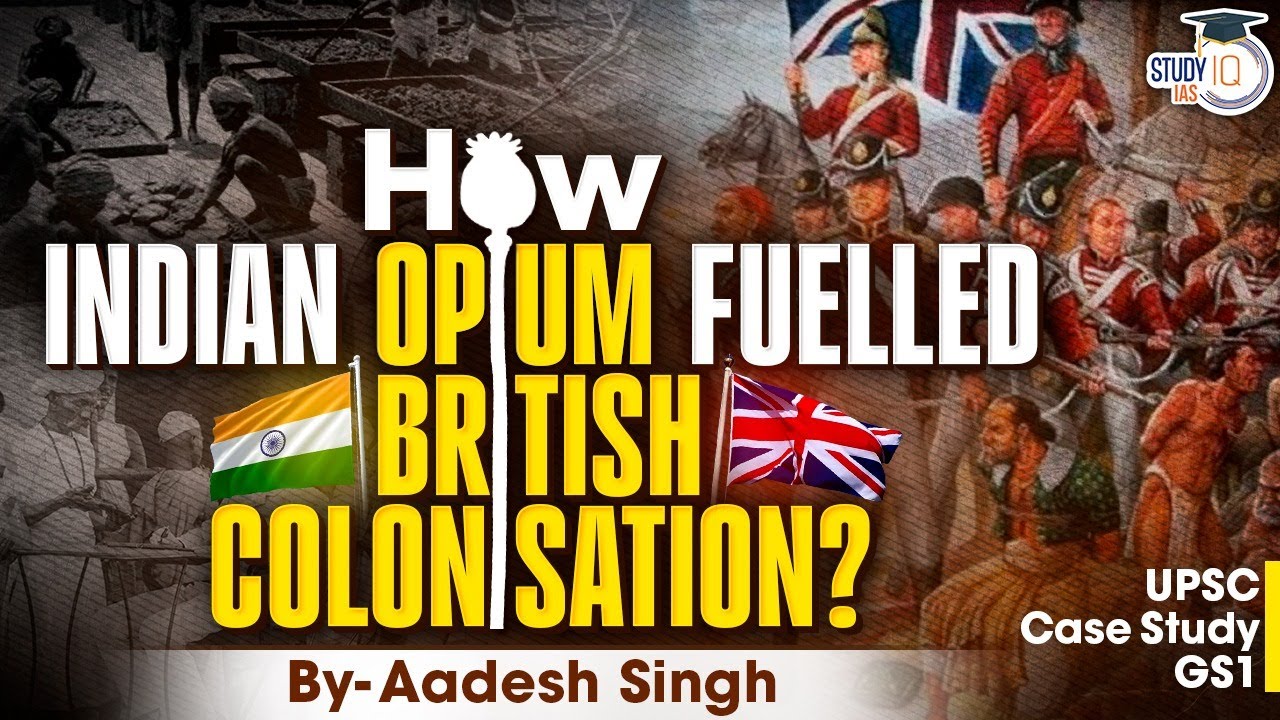History Of Singapore 新加坡的歷史 Part 2 (Discovery Channel)
Summary
TLDRThe transcript outlines the British opium trade with China, highlighting how the British East India Company capitalized on China's demand for opium by shipping it from India. Raffles' bold establishment of a trading port in Singapore, despite Dutch opposition, transformed it into a bustling trade hub, attracting diverse communities seeking economic opportunities and religious freedom. The influx of traders from China, India, and the Malay archipelago enriched Singapore's multicultural landscape, although the rise of opium addiction among workers posed significant challenges. Raffles’ vision of free trade ultimately shaped Singapore's identity as a vital commercial center in the region.
Takeaways
- 🌏 The British discovered a significant demand for opium in China, leading to a lucrative trade route from India.
- 🚢 Singapore's strategic location at the Malacca Straits made it essential for British trade between India and China.
- 🇬🇧 Sir Stamford Raffles took a bold step by establishing a British port in Singapore, defying Dutch control in the region.
- 📈 Raffles implemented a free trade policy, attracting traders and contributing to Singapore's rapid economic growth.
- 👥 Singapore's population quickly grew, with diverse communities including Chinese and Indian traders settling in the area.
- 🤝 The ethos of religious tolerance became a fundamental aspect of Singapore's multicultural society from its inception.
- ⚔️ Raffles faced opposition from Dutch interests but received support from the British government amid national pride following the Napoleonic Wars.
- 🏙️ The thriving trade in Singapore included goods like bird's nests, resins, and gold dust, enhancing its economic significance.
- 💊 The opium trade promoted by the British within China led to addiction among workers in Singapore, creating social challenges.
- 📝 Raffles' legacy as the 'father' of modern Singapore is marked by both economic prosperity and the complex social issues stemming from colonial practices.
Q & A
What was the main reason the British wanted to trade opium with China?
-The British discovered that the Chinese needed opium in large quantities, and they had supplies of it available from India. This created a profitable trade route for the British East India Company.
What was Raffles' role in establishing Singapore as a trading port?
-Raffles was an official of the British East India Company who decided to establish a port in Singapore, despite the Dutch control over the region. He aimed to create a free trade environment that would attract traders.
How did Raffles' actions provoke the Dutch?
-Raffles' decision to set up a port in Singapore was seen as provocative because the Dutch had been the military and economic superpower in the East Indies for 200 years. His actions breached company policy and upset the Dutch.
What was the significance of the Malaka Straits for British trade?
-The Malaka Straits were crucial for British trade as every ship had to pass through this narrow passage to protect their interests in the opium trade between India and China.
What was the response of Charles Bananaman to Raffles' establishment of Singapore?
-Charles Bananaman, the governor of Penang, was furious and contacted his Dutch counterparts to assure them that Raffles was acting without the company's authority. He tried to downplay the situation.
What led to the decision to allow Raffles to remain in Singapore?
-Due to a surge in military pride and national defiance in Britain following the Napoleonic Wars, the decision was made to allow Raffles to stay in Singapore instead of pulling him back.
What strategy did Raffles use to attract traders to Singapore?
-Raffles promoted free trade in Singapore, allowing traders to come and sell their goods without paying taxes, which was a significant incentive compared to other ports in Asia.
How did the demographic makeup of Singapore evolve during Raffles' time?
-A large Chinese community had been trading in the region for centuries, and many moved to Singapore for the benefits of free trade. Additionally, Indians came as traders, soldiers, and civil servants, while others from the Malay Archipelago sought economic opportunities.
What were some of the customs and practices in Singapore under Raffles' friend William Farquhar?
-William Farquhar allowed local customs, including slave trading and gambling, and did not intervene in the growing addiction to opium among Chinese workers.
What was Raffles' view on the spread of opium in Singapore?
-Raffles despised the spread of opium, yet it became an addiction among Chinese workers in Singapore, indicating a significant social issue during that time.
Outlines

Cette section est réservée aux utilisateurs payants. Améliorez votre compte pour accéder à cette section.
Améliorer maintenantMindmap

Cette section est réservée aux utilisateurs payants. Améliorez votre compte pour accéder à cette section.
Améliorer maintenantKeywords

Cette section est réservée aux utilisateurs payants. Améliorez votre compte pour accéder à cette section.
Améliorer maintenantHighlights

Cette section est réservée aux utilisateurs payants. Améliorez votre compte pour accéder à cette section.
Améliorer maintenantTranscripts

Cette section est réservée aux utilisateurs payants. Améliorez votre compte pour accéder à cette section.
Améliorer maintenant5.0 / 5 (0 votes)






